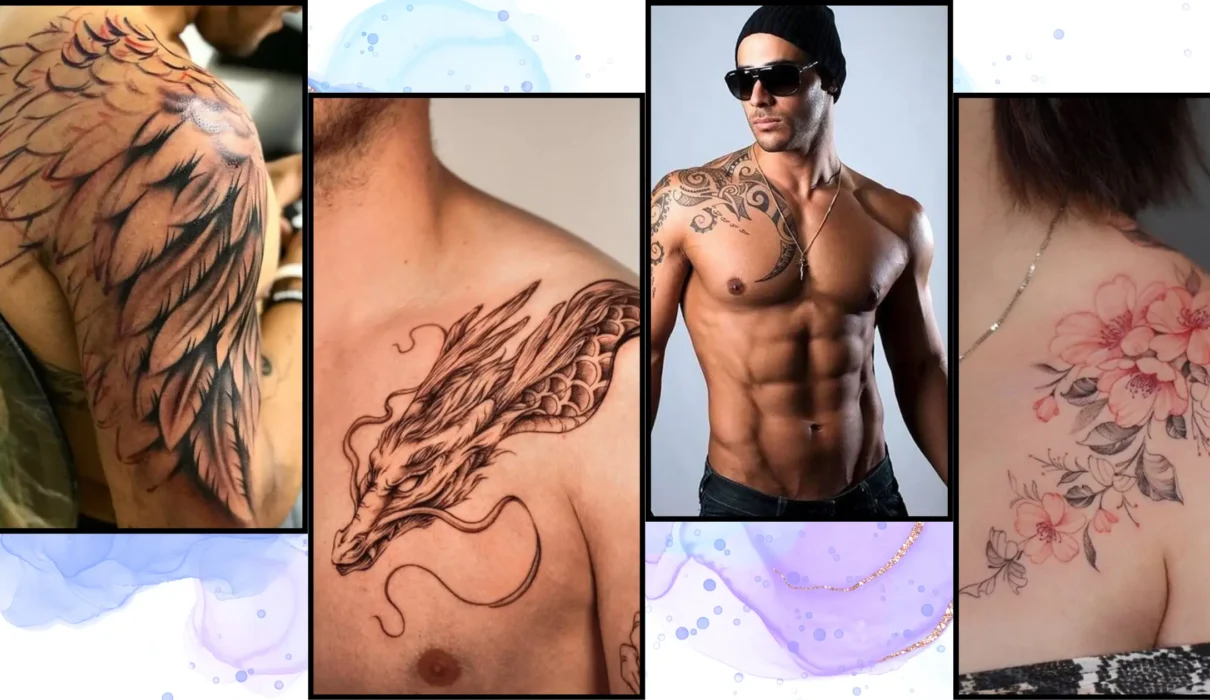Introduction to Shoulder Tattoos
The Significance of Tattoo Placement
When considering a new tattoo, placement is one of the most important early decisions. The shoulder area has emerged as a popular spot to get inked for several reasons. Unlike more public body parts like arms or legs, shoulders offer a discreet canvas that can be concealed or revealed depending on one’s outfit and comfort showing skin. At the same time, the curvature and structure of the shoulder lends itself well to an artful display of tattoos. When done properly, shoulder tattoos have an elegant flow that complements the natural lines of the body.
From a symbolic perspective, shoulders can represent strength, carrying heavy loads and supporting burdens. A tattoo in this spot conveys themes of responsibility, emotional depth and perseverance. The left side is also associated with feminine energy while the right embodies the masculine – making shoulders a prime location for expressing the full self through body art.
Why Choose a Shoulder Tattoo?
Shoulders offer ample space for both small and large designs. They provide a high point on the body suitable for detailing and allow for intriguing vantage points as art contours over the muscles and bones. This flexibility in size and perspective makes them a versitle placement option. Whether aiming for bold colors spanning the entire upper arm or starting with a modest, isolated emblem, shoulders accommodate an array of artistic visions.
The area also heals well for most people due to good circulation and thicker skin than other common tattoo zones. Shoulder tattoos are easy to care for oneself as the location remains visible. Combining practicality for the artist and client with abundant aesthetic possibility, shoulders have rightfully claimed recognition as a premier body canvas ready for ink.
Understanding the Different Sections of the Shoulder
The Shoulder Blade: A Canvas for Artistic Expression
The shoulder blade provides an angular segment of skin and muscle perfectly suited for elaborate tattoo designs. Its relatively flat shape allows for geometric patterns, nature scenes or warrior symbols to shine. Since clothing frequently conceals shoulder blades, going big and bold in this spot poses little issue. Symmetrical artwork down the vertebrae makes for striking reveals whenever wearers go barebacked. For those seeking to make a statement, shoulder blades broadcast body art loud and proud.
Top of the Shoulder: Curving Down from the Neck
The top ridge of the shoulder slopes attractively from the base of the neck, allowing tattoo artistry to fluidly connect with surrounding skin. This area works well for extensions of back and chest pieces that climb upwards or isolated motifs like crescent moons, sun bursts and constellations. The muscle definition here also lends itself to anatomically accurate body art representing wings, armor plates or terrestrial landscapes.
Front of the Shoulder: Collarbone and Creativity
The rounded caps of the shoulders down to the clavicle offer textured grooves suited for free-flowing creativity. This section moves the most, enabling kinetic tattoos that appear animated as skin shifts. Coiling vines, crashing waves, flocking birds and other fluid concepts enliven this mobile space. The front shoulders also provide visibility for personalized symbols or minimalist messages meant for frequent display.
Pain Perception: Do Shoulder Tattoos Hurt?
Navigating the Pain Spectrum
There are many myths and misconceptions around tattoo pain. The reality is that pain levels vary significantly based on individual factors as well as tattoo placement. Shoulder areas generally fall in the middle of the spectrum – not the most painful, but not the easiest to endure either. Tattoo veterans often rate the shoulder at a 5 or 6 out of 10 pain wise. However, each person’s sensitivity and thresholds differ.
Least Painful Areas for Shoulder Tattoos
The top of the shoulder and upper bicep area tend to provoke less discomfort thanks to thicker skin and significant muscle mass. These zones have more padding before reaching sensitive nerve networks. The outer shoulders also shift focus towards the arms and away from joint concentrations. Areas with the most tissue density and that are farthest from the collarbones or neckline typically receive the best pain reviews for shoulder tattoos.
Painful Zones: Nerves and Sensitivity
The interior shoulder muscles closer to the armpit and chest are significantly more painful for ink work. These narrow bands have little protective barriers over critical nerves and pressure points across the thorax. The front deltoid rounding over the shoulder socket also traps numerous nerve endings that amplify discomfort from the tattoo gun. Bony zones without much skin elasticity like inner collarbones and shoulder blades also generally trigger stronger pain signals.
Pain Management: How to Reduce Discomfort
Preparing for a Painless Tattoo Experience
While shoulder tattoos will always involve some degree of discomfort, proper preparation can significantly reduce strain. Setting the stage for an easier process requires addressing holistic health from the inside out. Key areas to focus on prior to shoulder tattoo appointments include physical conditioning, mental focus, nutritional support and lifestyle balance.
The Importance of Hydration
Staying hydrated keeps the body resilient under stress. Drink plenty of water in the days leading up to a new tattoo and ask your artist about intra-session intake if sitting for an extended period. Well-hydrated skin also holds ink more effectively. Avoid alcohol and caffeine before sessions as both dehydrate tissues.
Nutritional Prep for Tattoo Sessions
Supporting your body nutritionally prepares it to handle inflammation and skin cell regeneration. Emphasize iron-rich whole foods that maximize hemoglobin levels since oxygen transport aids healing. Seek protein for tissue repair while limiting sugar that can agitate the process.
The Role of Adequate Rest
Being well-rested gives your body the resources it needs to cope with tattoo discomfort while enabling clearer communication about limitations. Prioritize sleep, particularly the night before an appointment when possible. Listen closely and speak up about desired breaks during long sessions. Don’t underestimate how fatigue multiplies discomfort.
With the right preparation, shoulder tattoo experiences can be smooth, virtually painless and produce artworks to proudly enjoy. Relief is within reach through smart self-care.
Pros and Cons of Shoulder Tattoos
Advantages of Opting for a Shoulder Tattoo
Shoulder tattoos offer many perks that explain their attraction for ink lovers. The area provides ample space for both detail-oriented and expansive designs. Shoulders allow for easy concealment under clothing while accommodating visibility when desired. Their high point on the torso enables interesting perspectives and rotational dimensions in tattoo art. Shoulders also heal relatively fast with minimal complications thanks to good circulation. Overall, they provide the ideal tattoo canvas blending visibility, discretion, minimal restrictions and abundant artistic possibility.
Considerations and Challenges
While shoulders excel as tattoo placement, the area comes with some important considerations. The curvature and frequent movement means designs require skill to properly proportion and position. Muscular shoulders also typically demand repetition and bold linework to make tattoo artwork stand out. Healing around workout friction requires extra diligence as well. Those who swim, play sports or lift weights will need to account for shoulder tattoos appropriately in their activities.
Aftercare Dilemmas
The shoulders demand constant motion whether reaching, gesturing or carrying objects. Artists recommend keeping new tattoos bound for the first several nights to avoid unintended friction or impacts that can ruin fresh ink work. Restraint may prove challenging for the always-in-use shoulders, but is critical for proper healing. Thorough aftercare education ensures people avoid undermining their shoulder tattoos through inadvertent neglect. With dedicated protection during recovery, shoulders tattoos flourish.
Shoulder Tattoo Ideas
Floral Tattoos: Embracing the Curves
Floral tattoos perfectly accentuate the rounded caps of the shoulders. Both masculine and feminine flower pieces intertwine beautifully with the topography of this area. Classic roses, lotuses and cherry blossoms cascade attractively down the upper arm while tribal Maori and Hawaiian floral patterns flourish across the back. Shoulders allow flowery body art to bloom fully.
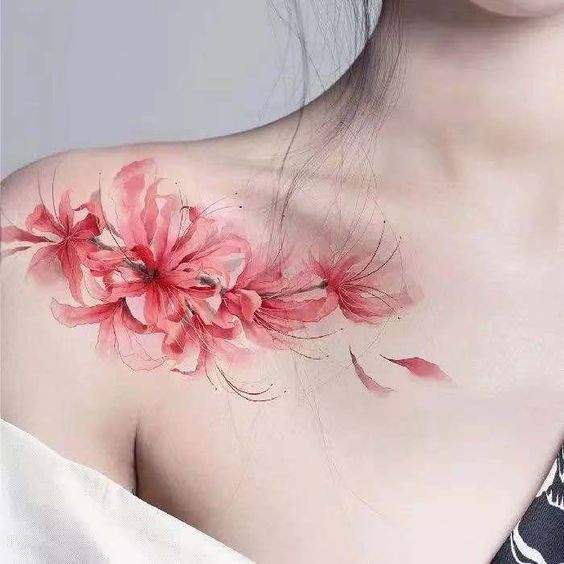
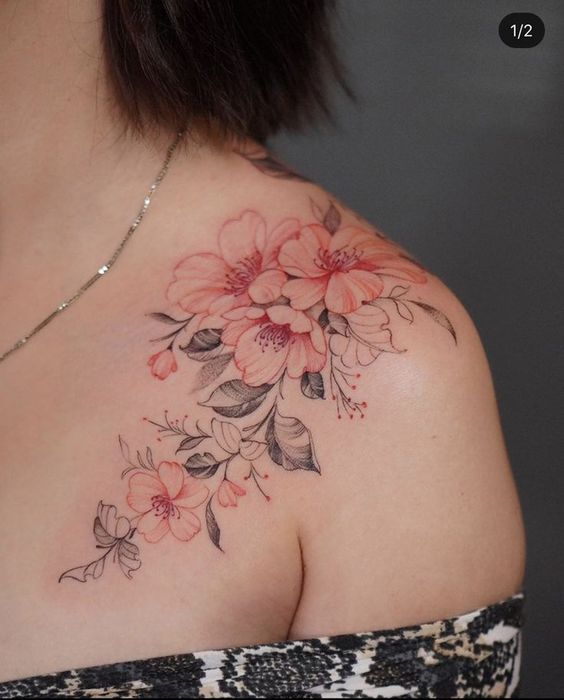
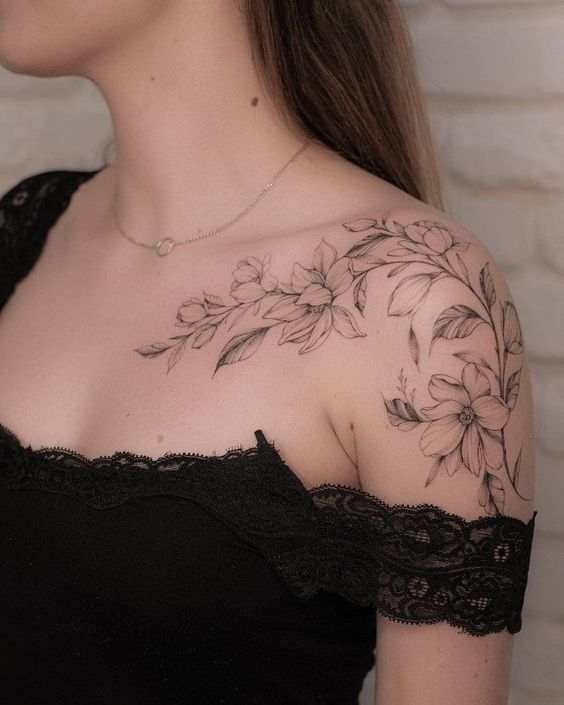
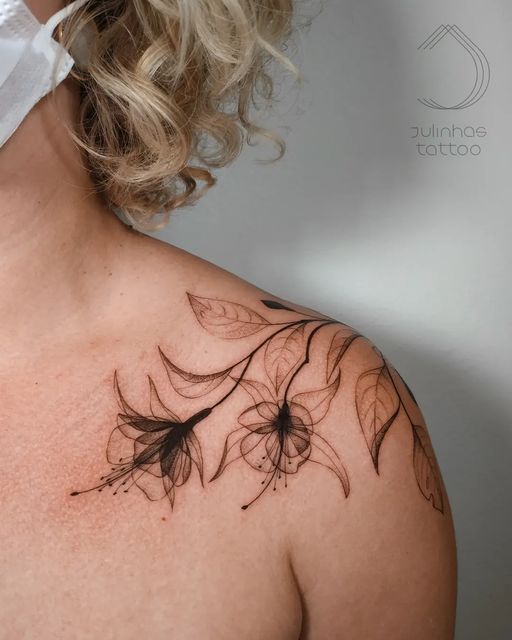
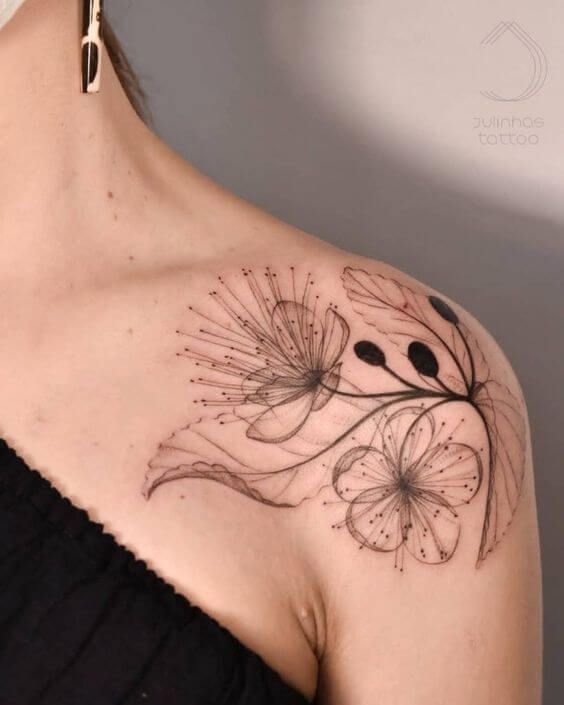
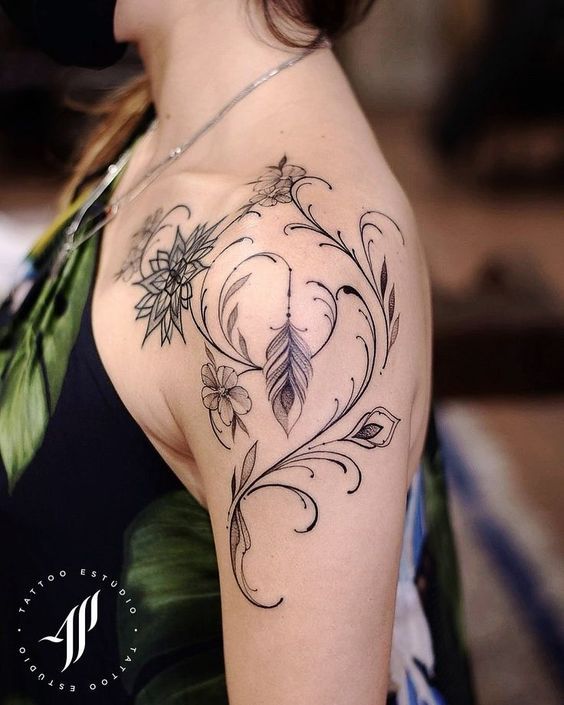
Wing Tattoos: Symbols of Freedom
The shoulder blades aptly display wing tattoos that appear to sprout from the back. Angel wings and similar spiritual symbols express ascent and enlightenment through shoulder placement. More realistic bird wings embody themes of taking flight and overcoming burdens. They also flex naturally with the shoulder muscles for added dynamism. For wing artwork, shoulders provide ideal anatomical installation.

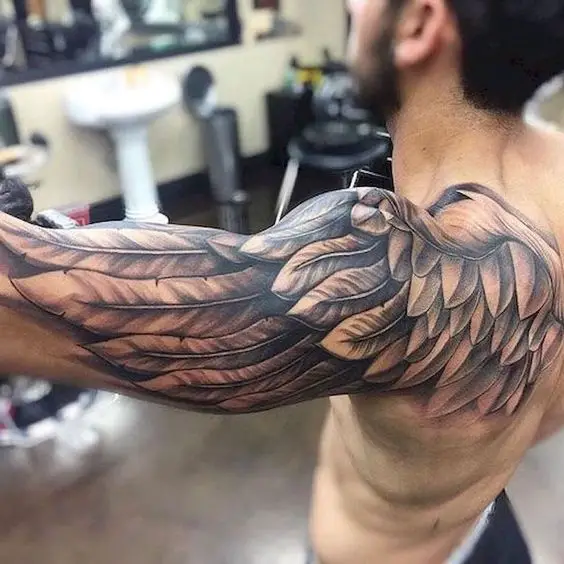
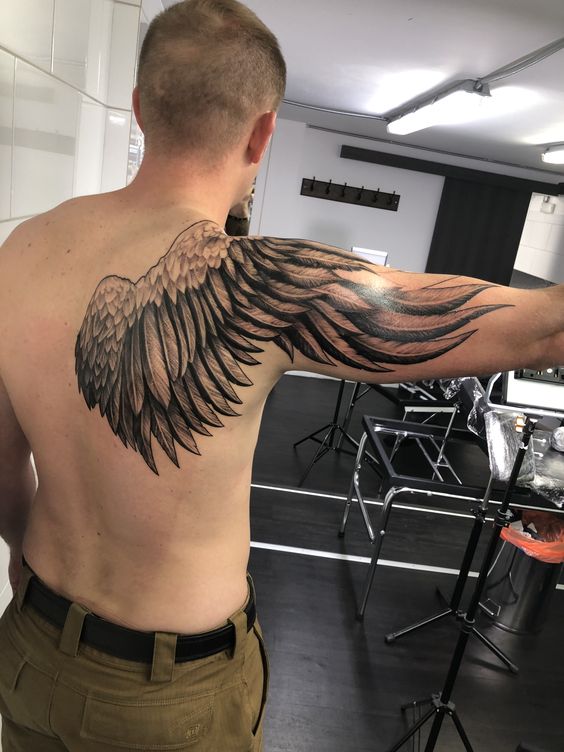
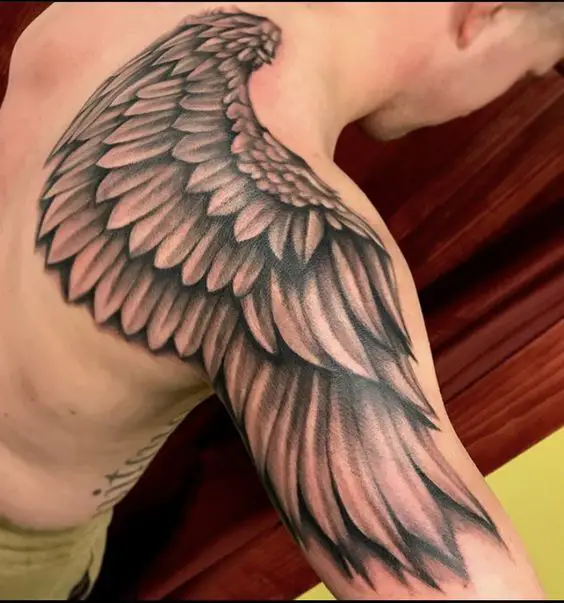
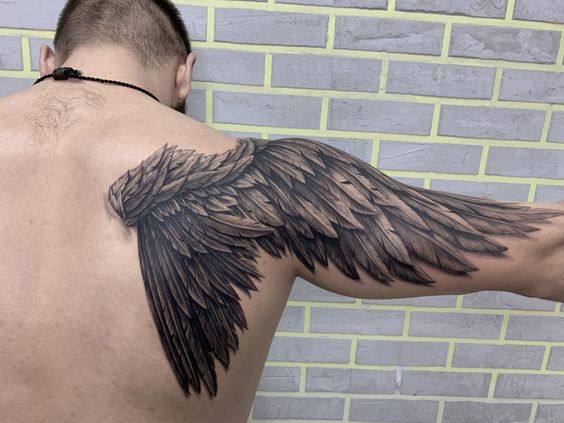
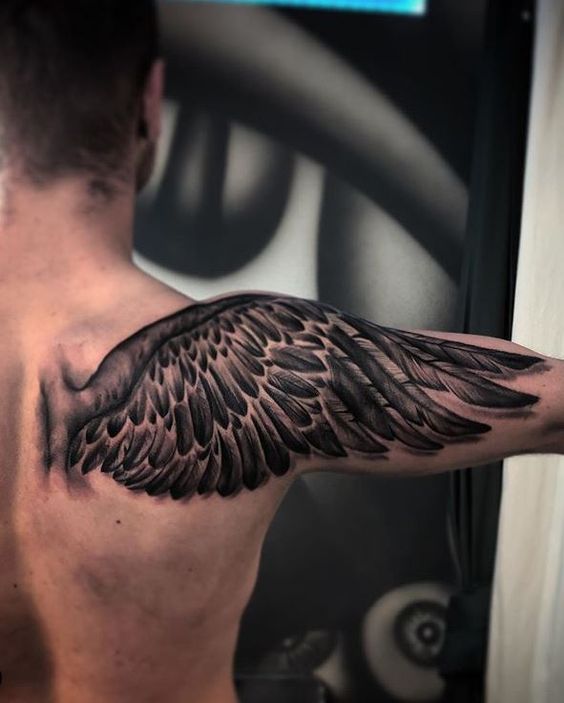
Tribal Tattoos: Cultural Significance
From Haida eagle designs to Celtic knots and Polynesian wave patterns, shoulders prominently exhibit tribal tattoo heritage. The connectivity between shoulder muscles and arms allows cultural symbols to flow seamlessly across the upper body. Tribal tattoos interwoven with traditional Islander, Native American, African and Eastern motifs imprint the shoulders with profound ancestral meaning.
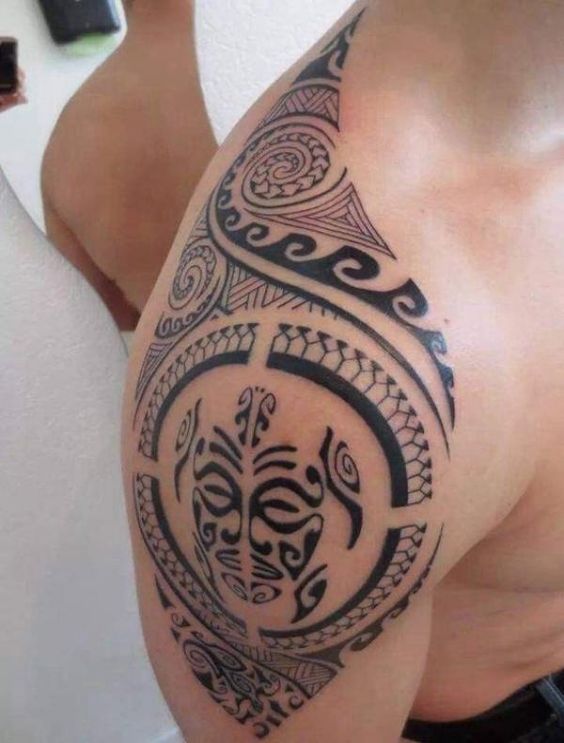
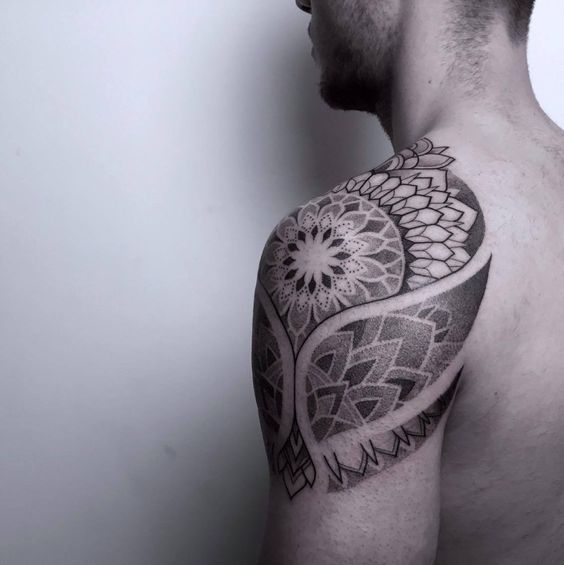
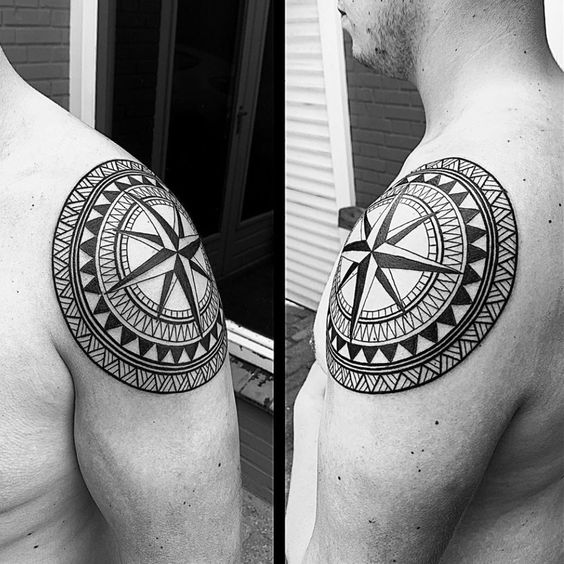
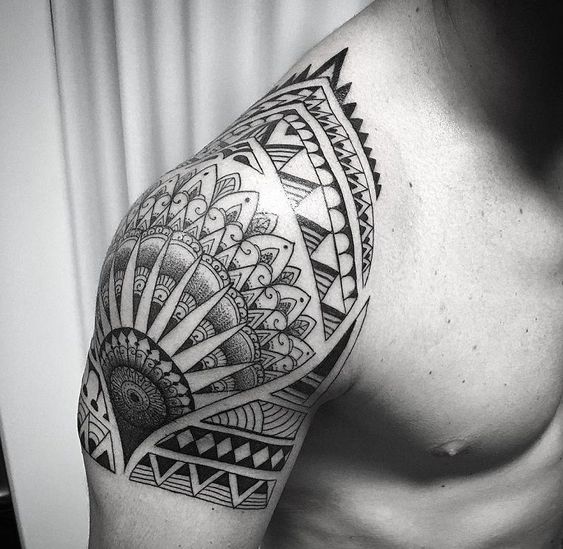
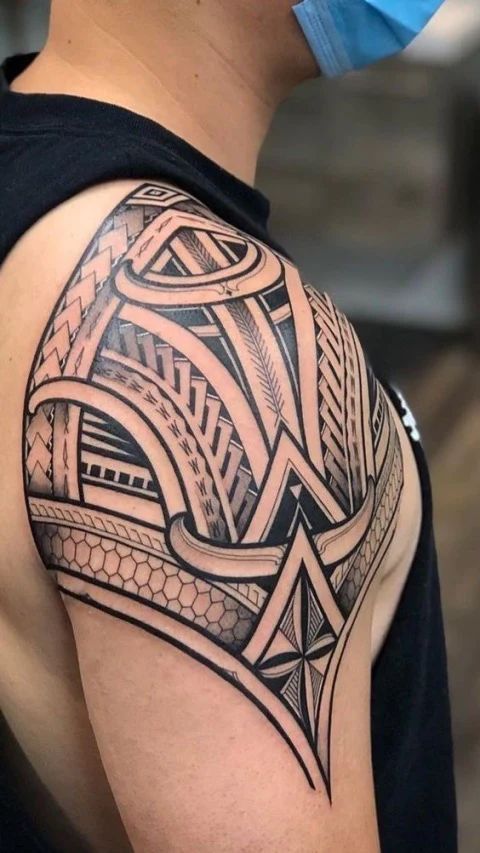

Dragon Tattoos: Flowing Designs
Dragons wind dynamically across broad shoulder blades, their scaled armor glistening with movement. They emerge from hiding ready to take flight, fire blazing as front-facing dragon heads peer out across chest and biceps. Shoulders allow these mythical creatures space to surface and submerge organically through contoured tattoos.
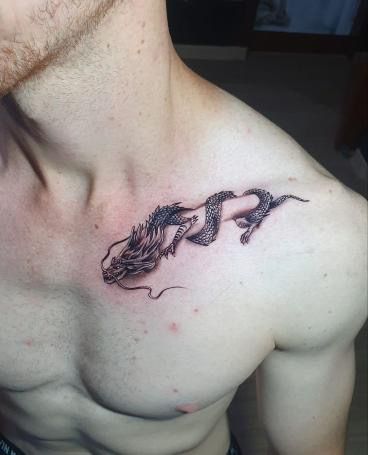

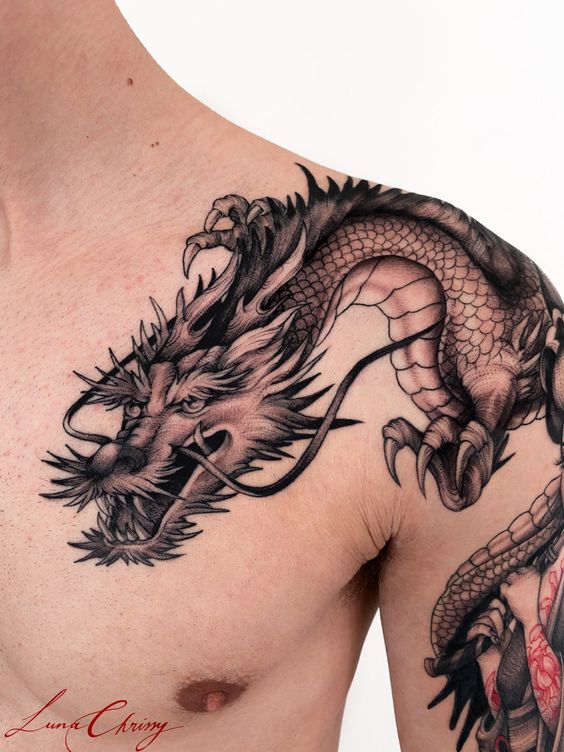
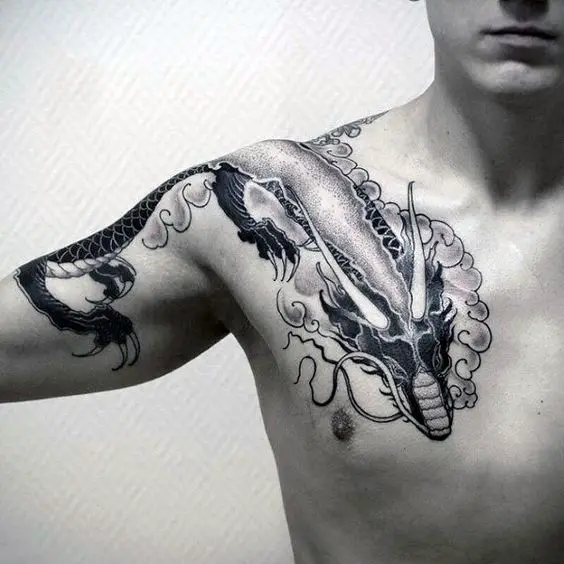
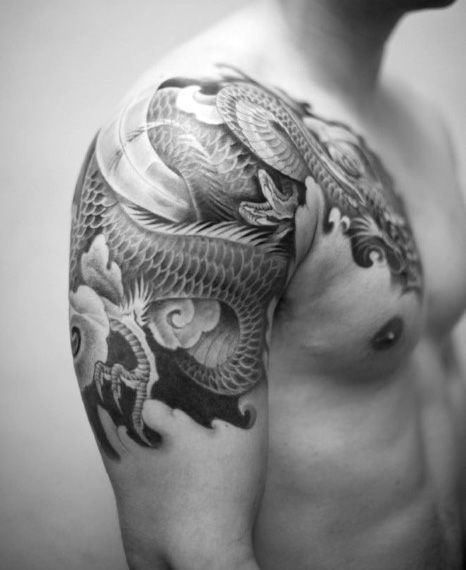
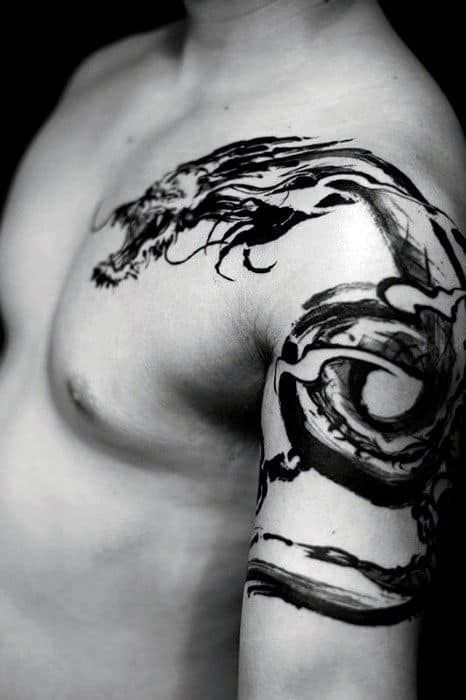
Word Tattoos: Minimalistic Elegance
Script lettering and meaningful words artfully align with the shoulders’ natural curves. Collarbones aptly display short inspiring phrases or names of loved ones with minimalist finesse. The sideways taper of the shoulders also allows words and dates to run vertically for erased readability. For compact tattoos with motivational impact, shoulders deliver perfect, discreet placement.
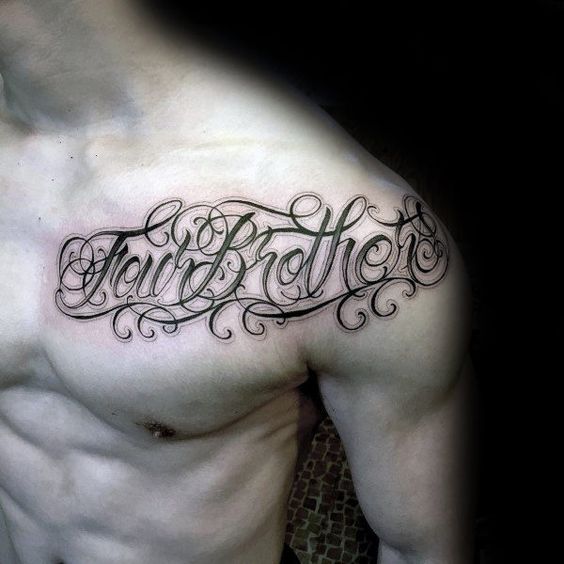
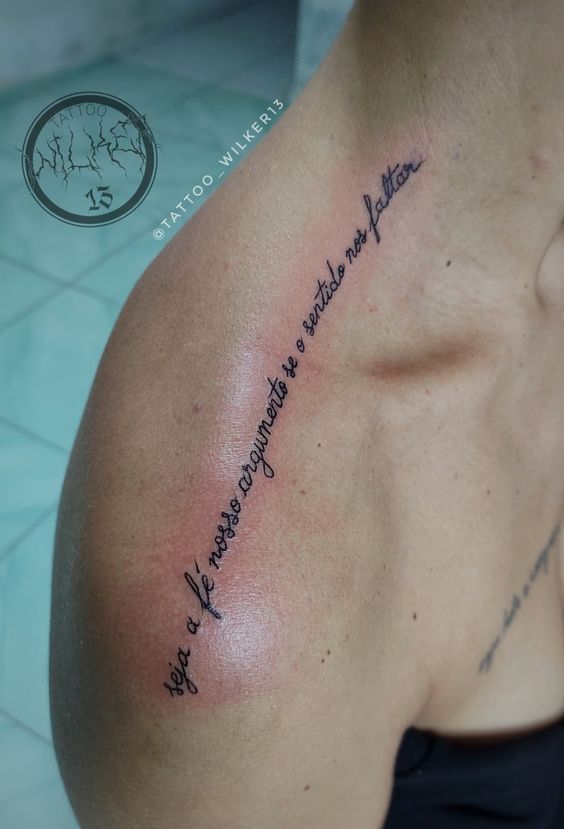

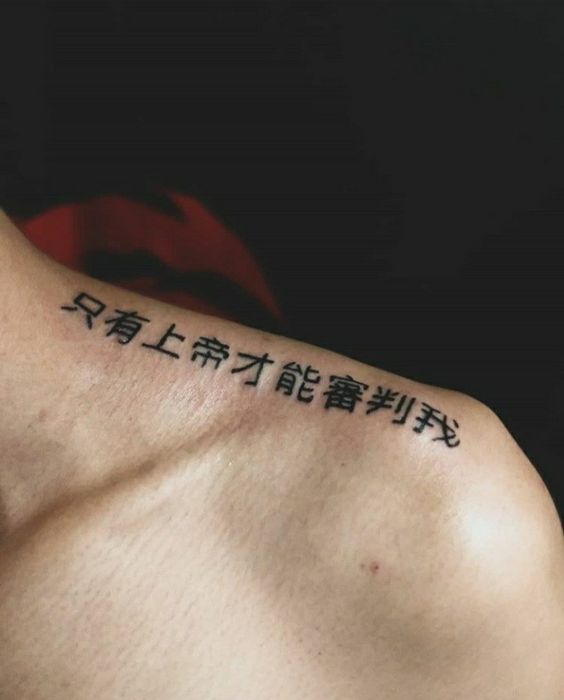
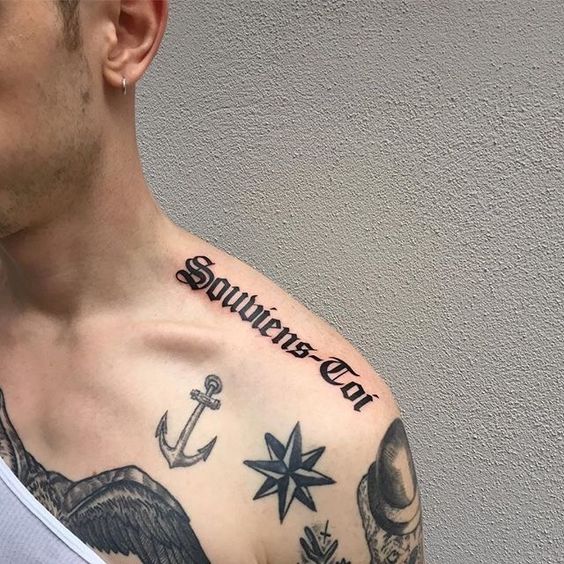
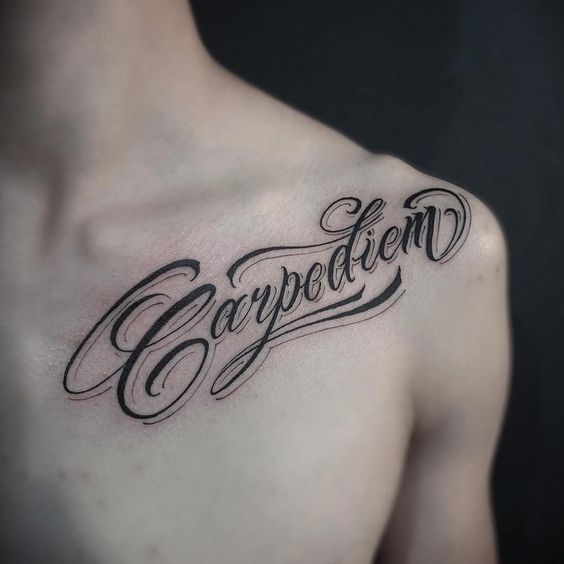
Mirror Tattoos: Creating Balance
Shoulders lend themselves seamlessly to symmetrical artwork, making mirror image designs another compelling option. Ink that reflects identical on both left and right shoulders strikes an eye-catching balance while allowing bigger, bolder pieces. The shoulders’ matching size and shape transforms tattoo art into impactful living sculpture through two-sided mirroring.
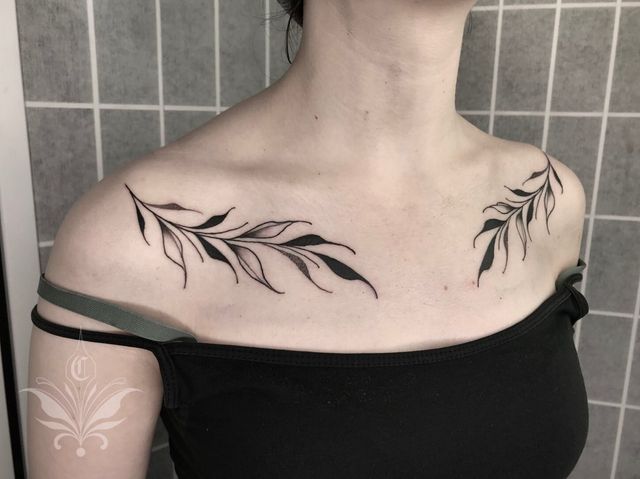

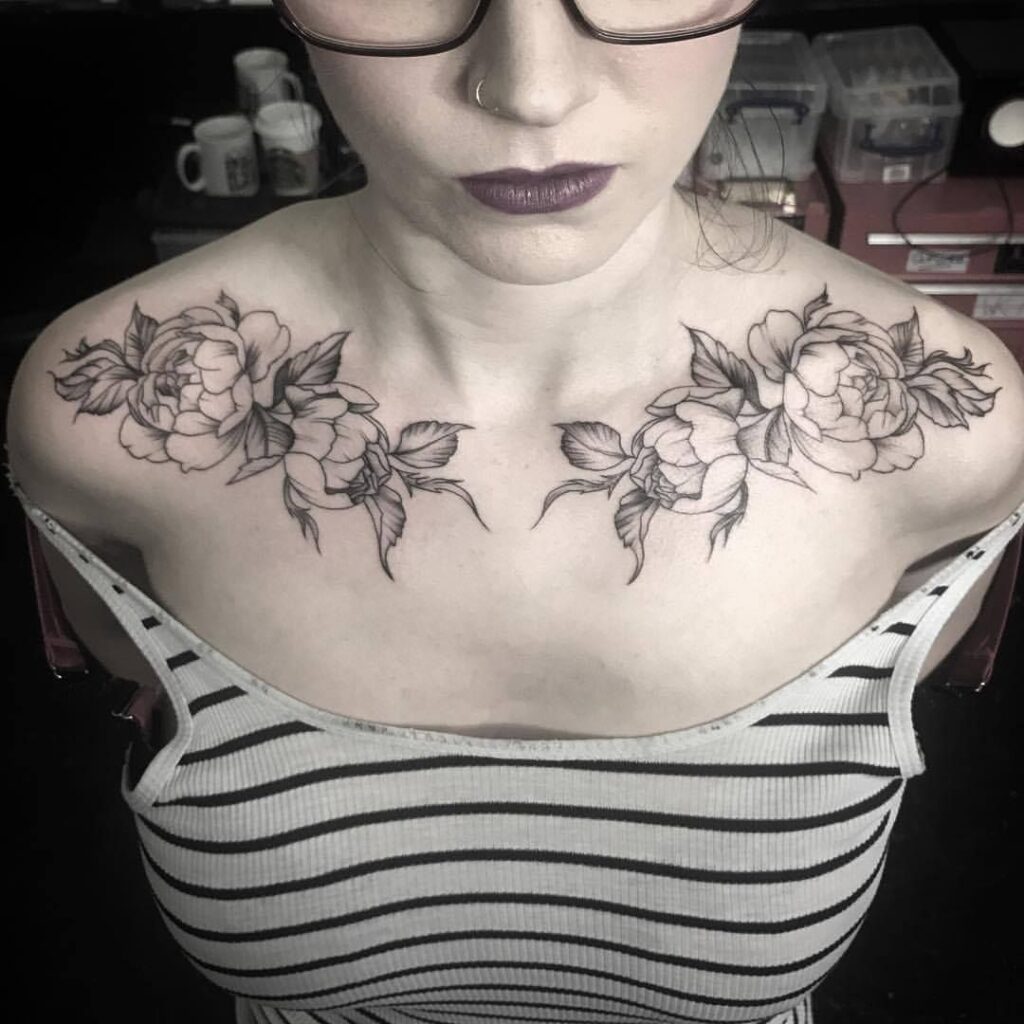

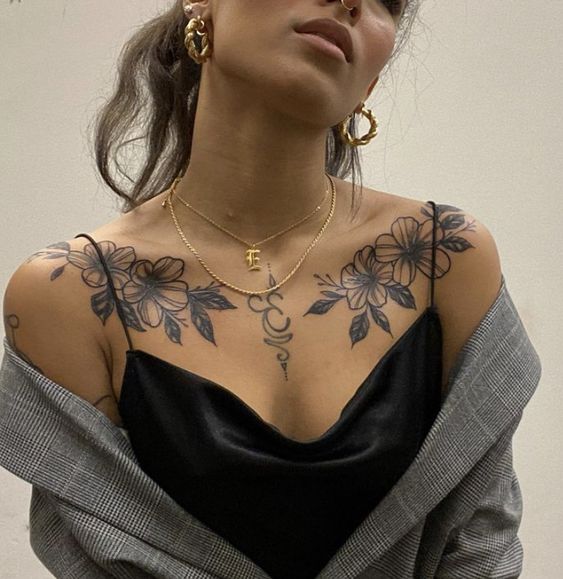
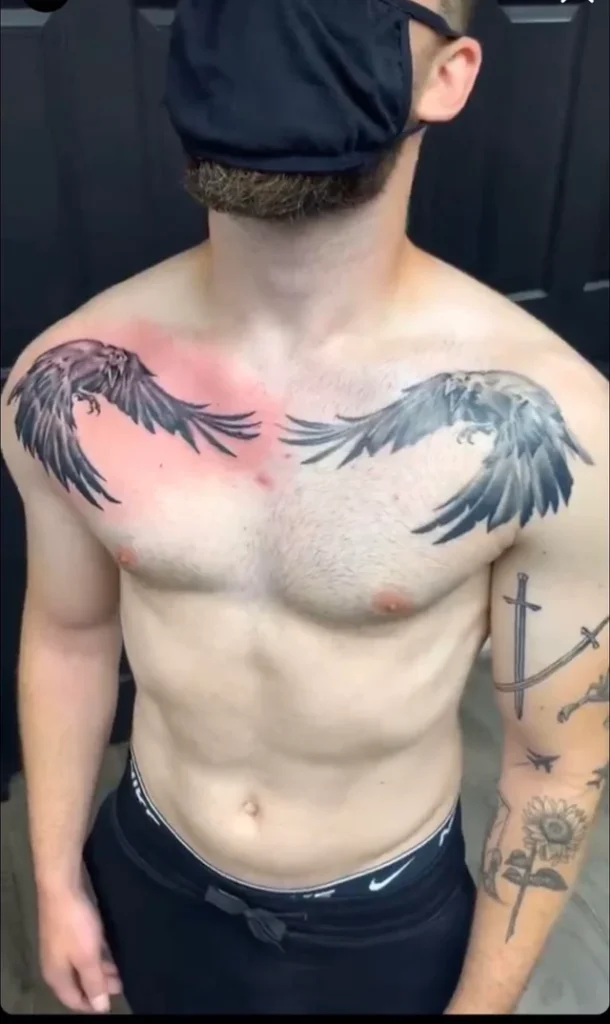
Conclusion: Embrace Your Shoulder Tattoo Journey
Shoulders offer an exceptional tattoo canvas blends artistic display with personal meaning. Their curvature creates possibilities for elaborate compositions or intimate symbols rendered with equal impact. Shoulders empower wearers to reveal bold artwork or retain discreet solidarity through body art strategically imprinted along this transitional upper body zone.
From athletic competitors to fierce warriors, spiritual pilgrims to loving partners, shoulder tattoos convey identity tied profoundly to personal experience. Cultural rites, family chronicles, lynchpin moments and lifelong journeys all imprint unforgettably on this adept human billboard.
Yet for all their symbolic weight, shoulders manage featherlight designs just as aptly. Minimalist or expansive, fine-lined or fully saturated, shoulders handle any tattoo concept with adaptable ease thanks to their muscular dexterity.
So whether treating your shoulders as decisive visual manifesto or understated personal totem, embrace the process fully to create artwork that evolves beautifully with your unique story. Let skilled hands unlock the tattoo possibilities of your shoulders and launch external emblems resonant with internal growth. Your human canvas awaits.
FAQs
1. How long does it take for a shoulder tattoo to heal?
A shoulder tattoo typically takes 2-3 weeks to fully heal. The first week involves cleaning, bandaging, and letting the initial scabbing happen undisturbed. During weeks 2-3, the scabs naturally fall off as new skin regenerates. Avoiding friction and contaminants during this time is crucial.
2. Where is the least painful spot to get a shoulder tattoo?
The least painful areas for shoulder tattooing are generally the upper arm and tops of the shoulders. These zones have extra muscle and tissue padding with fewer nerve endings. More sensitive zones are the collarbones, shoulder blades, and inner arm.
3. What is the ideal shoulder tattoo size?
Shoulders accommodate a wide range of tattoo sizes and design complexities. Small isolated designs around 2-5 inches make great first tattoos. However full shoulder caps can feature elaborate 12-18 inch mixed media tattoos as well. Consult your artist about balance and flow.
4. Can I work out right after getting a shoulder tattoo?
No, allow shoulder tattoos around 2-4 weeks of healing before engaging in intense exercise or activities involving friction on the area. The initial 2 week scabbing period is crucial not to disturb and risk complications.
5. What does a shoulder tattoo symbolize?
Shoulders symbolically carry weight in emotion and responsibility. Shoulder tattoos echo themes of perseverance, focus, strength to cope with burdens. They bridge connections across diverse symbols of personal identity and growth.


